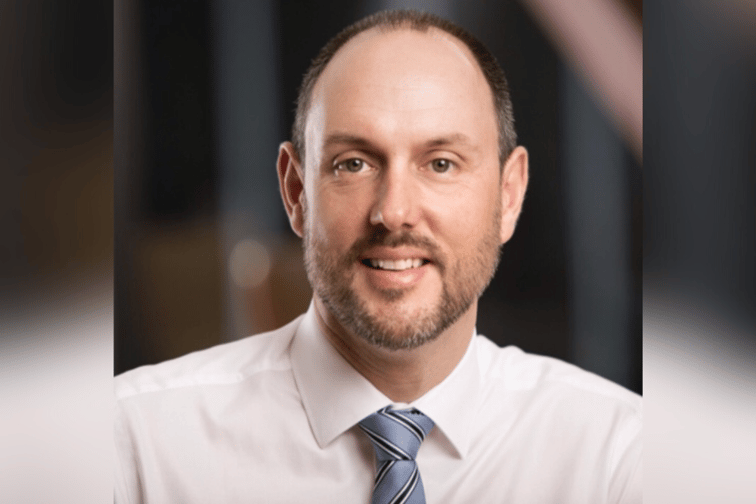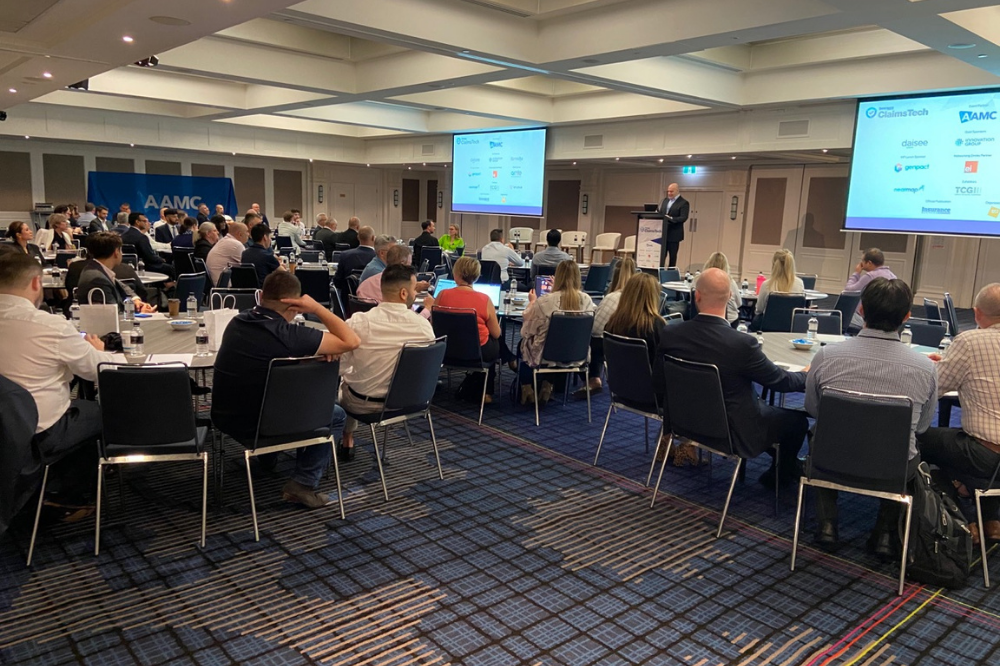

Despite heavy rain and flooding across parts of Sydney, the Insurance Business 2022 ClaimsTech Summit Australia went ahead on Thursday. Remarkably, more than 150 industry professionals (pictured below) braved the weather and attended IB’s first physical in person event in Australia since COVID-19 started two years ago.
With tens of thousands of flood claims coming in from policyholders all along the east coast, conference delegates, whether they liked it or not, had a real time example of how well claims processes are working under pressure.
“Now it’s all about getting claim numbers out, getting claims lodged, managing the phone calls coming in around lodgements - that’s the whole process that’s well underway,” said Steven Raynor (pictured above), vice president of insurance at Genpact, who spoke at the conference and sponsored the VIP Lunch.
Raynor said the regulatory impacts of the 2019 Hayne Royal Commission on the claims space was one focus of the conference. However, he said, the catastrophic weather and the ongoing pandemic were also big drivers of claims area changes.
One big change since COVID-19, said Raynor, is the increased use of virtual inspections by insurers. This is especially useful in a flood situation where assessors can’t reach the damaged properties in person.
“I think in that way, COVID has been a blessing - if you can call it that - for the insurance industry over the last couple of years. This switch to virtual assessing compared to in-person physical assessing, the insurance people have been forced to do that,” he said.

However, Raynor said it’s very important for the insurance industry to understand the different roles of technology and people in the claims process.
“For example, if your basement flooded you don’t want to talk to a robot. You want to talk to a person,” he said.
“First, you want them [the claims person] to empathize with you, second, for them to understand what you’re going through and then thirdly, that you’re covered,” said Raynor.
But equally, he said, the claims officer should have an algorithm behind them to help steer the claim in the right direction. He said the companies that are getting it right in the claims space know how to blend the two – where to use people and where to use technology.
“I think it’s very easy to mix the two up,” he said.
At ClaimsTech, some of the new technology that can help claims teams do a better job was on show.
Raynor said the company exhibiting opposite his booth provided light aircraft for photographic damage assessments from the air.
“Ten years ago, you would never have imagined that the technology would have been there and high resolution enough - but these days it works pretty well,” he said.
Raynor said the resolution quality of satellite images is now also good enough to do parts of claims assessments. Other companies are using drones in the risk management and insurance space.
In recent years, weather modelling has also improved considerably, he said. This allows insurance companies to confidently prepare their response, including claims teams, well in advance of a major weather event.
Raynor said his company was born 20 years ago as an outcrop of General Electric. One of their specialties today is running claims and underwriting processes for clients.
“What’s made us successful is being able to significantly improve those processes using technology, using analytics, using data and using good old fashioned Six Sigma,” he said.
Six Sigma refers to methods and tools for business process improvement and was developed by American engineer Bill Smith at Motorola in the mid-1980s
“We prefer to create what we call an ecosystem of partnerships,” he said.
In February, following a successful piloting program, Genpact formalized a partnership with Claim Genius, an AI-based claims solution provider for auto insurance.
“We have a workflow tool called claims manager and what we’ve basically done is created a hard integration in that claims manager workflow so that the activities that Claim Genius perform are essentially embedded into our workflow,” said Raynor.
Genpact has similar partnerships with banks and also financial and accounting businesses.
On Thursday, Raynor used his talk during the VIP lunch to focus on digital and data analytics in claims. But he wanted to make sure he was delivering something cutting edge.
“So we started off with our Formula E racing partnerships,” he said.
Formula E is Formula 1 car racing for electric cars. Genpact has sponsored and teamed up with Vision Racing, who compete in these events, to help them use data analytics to get the most out of their driver and car.
“All the cars are the same so it’s really about how good the driver is and how you manage the car,” said Raynor.
“So we use that as an example just to talk about the use of data, analytics and our technology capability and how we view the fact that we’re different than a pure play technology provider,” he said.
Apart from its work in the motor claims insurance space with Claim Genius, Genpact also has an analytic tool to identify subrogation claims in third party car insurance claims.
Raynor said about 20% of third-party motor claims are subrogation claims and insurance companies spend a lot of money trying not to miss them. However, inevitably, human error means some get through.
“So we’ve got an analytics tool that basically reads claims files and the details in the claim using natural language processing to advise the insurance company if there’s a subrogation claim that they’ve missed. If there is, they can then go and collect their money,” he said.
Raynor said even a couple of percentage points improvement in subrogation claims can be worth a couple of million dollars to an insurance company.
Genpact also has an algorithm that helps companies optimise their reinsurance recoveries. He said this is particularly relevant for claims events brought on by today’s challenging weather.
“What insurance claims officers should be doing when they lodge the claim is coding the claim as a cat claim,” he said. “That’s the trigger for the reinsurance team to collect the cost of that claim or recover the cost of that claim against the reinsurance treaty.”
He said for big events, like the current flooding, claims teams are communicating frequently and the possibility of missing claims during this period is “pretty low.” However, the claims that roll in a few months after the event can sometimes be missed, he said. There are also cases where claims officers forget about a claim or there are smaller cat events that might not get coded, he said.
“What our algorithm is doing is basically looking for claims. It’s reading the claim file notes and identifying claims,” he said.
Raynor said for every 10,000 claims, they may only find a few hundred that are missed.
“So, the numbers aren’t massive but one or two missed reinsurance recoveries adds up and you can easily get over a million dollars,” he said.
The 2022 ClaimsTech Summit Australia was held at the Swissotel Sydney on March 03 and united Australia’s top insurance companies with the goal of promoting innovation and adapting to the changing business environment.
